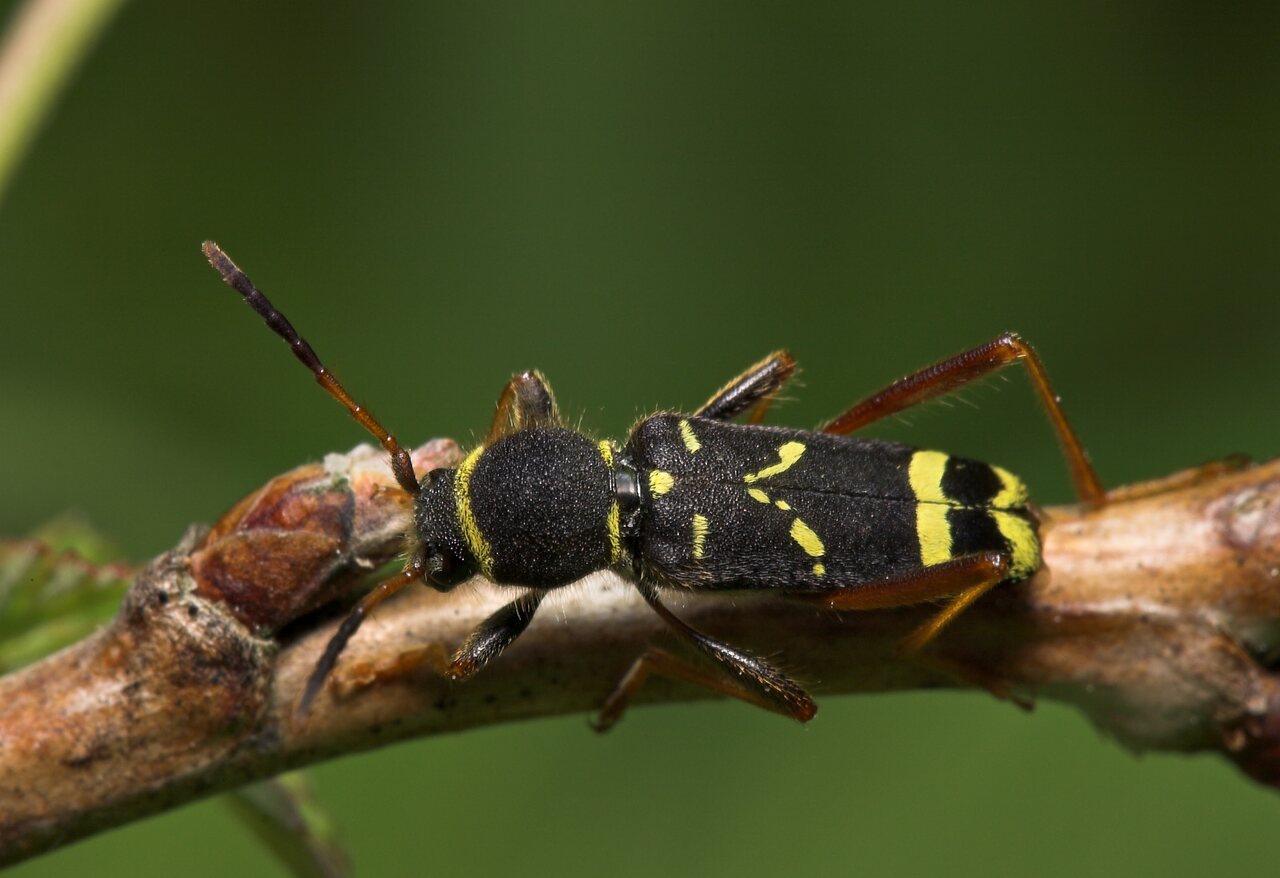
Clytus arietis · drebulinis raštenis
- wasp beetle
- Echter Widderbock, , Gemeine Widderbock, Wespenbock
- drebulinis raštenis
- biegowiec osowaty
- Lövgetingbock
The larvae live in dead wood. Eggs are laid in crevices in the bark of recently fallen or dead trees, fallen branches of posts etc. The larvae initially live under the bark but when about half grown they tunnel into the xylem. When fully grown they construct a pupal cell, parallel to the wood grain, around 3-5cm long at the end of the tunnel. Pupation occurs either during September or October or in the spring of the following year. The entire life cycle generally takes two years, but adults have been known to emerge from furniture after several years.
Adults feed on pollen and occasionally small insects, this may be particularly so for the female to provide protein for egg production. They mimic wasps both in their appearance and their rapid, jerky movements, and they are said to produce a buzzing sound when threatened. They can be seen wandering around on flowers from late spring to early summer, and they are easily mistaken for wasps.
Kūnas 6,5 - 14 mm ilgio, juodas. Kojos rusvos. Antenos trumpos. Antsparniai su geltonais plaukuotais raiščiais. Panašus į vapsvą (mimikrija). Vabalai skraido gegužės – liepos mėnesiais. Sugaunami ant žydinčių krūmų ar žolinių augalų. Paprastai pažeidžia erškėtinių šeimos džiūstančius medžius ar krūmus.
Subfamily: Cerambycinae · ūsuotėnai
‥
0 comments
Add a comment
Comments